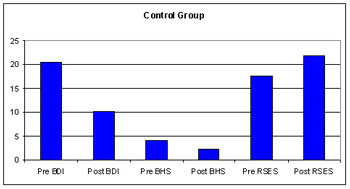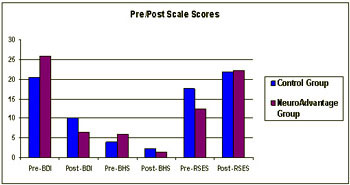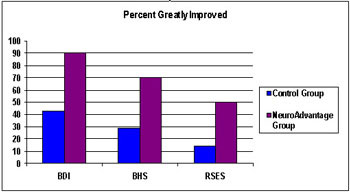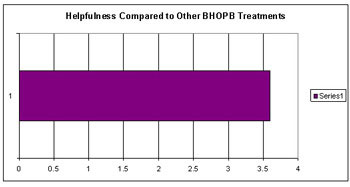Light and sound neurotherapy (LSN) is one of many cutting-edge treatment therapies that the Behavioral Health of the Palm Beaches facility offers. It’s a safe and completely drug-free approach, most used in the treatment of trauma, and involves a combination of light and sound to produce a favorable response from the brain. Numerous studies have also revealed the effectiveness of light sound neurotherapy in the treatment of depression disorders.
The process strengthens desired brainwave response patterns by taking advantage of the brain’s natural tendency to synchronize with pleasant rhythmic stimulation.
What Is Light and Sound Therapy?
Different from music therapy, light and sound therapy allows patients to focus on a single harmonic note for a prolonged period, which places them in a meditative-like state. This helps to relieve stress and promote relaxation.
Certain frequencies in light and sound neurotherapy offer therapeutic benefits. For example, the purr of a cat registers between 20-140 hertz, a range that has been proven to be clinically viable for managing many illnesses.
Before adopting light sound therapy into patients’ treatment plans, Behavioral Health of the Palm Beaches’ team of research professionals conducted their own clinical assessment of it’s validity and effectiveness. The study was administered to patients with two simultaneous disorders, 11 of whom were given light sound neurotherapy.
After a series of different stimulation exercises, light sound neurotherapy recipients reported the following results:
- 9 out of 11 reported improved sleep quality and duration
- 6 out of 11 reported pleasant dissociative experiences during their sessions (e.g., sense of floating)
- 6 out of 11 reported increased focus and concentration following the sessions
- 6 out of 11 exhibited decreased anxiety symptoms
- 6 out of 11 exhibited increased patience and reported being less irritable with others following the sessions
- 5 out of 11 reported repressed memory recall during the session, 3 pleasant childhood memories, 2 involving childhood abuse
- 4 out of 11 reported decreased or the disappearance of pain following the sessions
- 2 out of 11 reported dramatic improvement or disappearance of facial tics as told to clients by peers
Overall, the study demonstrated favorable outcomes in the LSN group compared to the control group who received standard treatment. Administrators of the study also reported that their patients consistently felt a sense of calmness after their LSN sessions.
Light and Sound Neurotherapy (LSN) Treatment Intervention:
To provide a better idea of what activities and benefits patients in sound healing for depression and anxiety generally experience, below are more details about the study that we conducted.
Like our patients often do, subjects listened to coaching CDs during their sessions. These CDs combined positive affirmations and guided visualizations with psychological education. The four CDs were titled:
- Mindfulness Meditation
- Deep Relaxation
- Step 1: Acceptance of Powerlessness
- Beating-the-Blues
Results:

As seen in figure 1, the control group who did not receive LSN treatment but still received BHOPB’s standard treatment services decreased their ratings of depression and hopelessness by an average of approximately 50% and improving their self-esteem scores by 25%.
These findings confirm the significant improvement clients on average make during their participation in BHOPB’s program.

As shown in figure 2, the group who did receive LSN treatment (“NeuroAdvantage Group”) made even greater improvement than the control group. On average, this group’s depression and hopelessness scores decreased by 75% while their self-esteem scores increased by 80%.

Figure 3 represents the percent of the LSN and control group subjects who “greatly improved” as indicated by a 50% or more decrease in depression and a 100% or more improvement in self-esteem.
Overall, more subjects from the group that received LSN more often greatly improved than the other group. This finding suggests that by adding neurotherapy groups to its treatment services, BHOPB significantly increases the likelihood that every client makes substantial improvement while participating in their program.

Figure 4 presents the LSN group subjects’ rating on a five-point scale of the helpfulness of their neurotherapy group experience compared to other BHOPB treatments (0 = One of the Least Helpful; 2 = About Average; and 4 = One of the Most Helpful).
Since the purple bar nearly reaches “4,” this indicates that many subjects feel that LSN was one of their most beneficial experiences during treatment.
Overall, this study from our dedicated team of researchers shows that LSN treatment benefits a large number of patients that undergo LSN. It’s why so many of our patients looking for relief and a sense of stability enroll in this innovative and drug-free treatment option.Light & Sound Machine Benefits
During a sound frequency healing session, patients are exposed to a variety of sounds at varying frequencies and intervals while they lie down with their eyes closed. During the session, they are encouraged to focus only on the different sounds in an effort to experience their potential healing properties.
Differing sounds can include low-frequency pulses and high-pitched pings from various instruments. A human voice is also commonly used.
Each part of the body has a resonant frequency and will respond to different pitches and sound types. Sound and light therapy have proven effective in treating conditions like depression, anxiety, sleep disorders, PTSD, and more.
Some of the most commonly reported sound healing benefits include:
- Reduced stress and anxiety
- Fewer mood swings
- Lower blood pressure
- Lower cholesterol levels
- Improved pain management
- Reduced risk of stroke, coronary artery disease, and other cardiovascular-related risks
- Improved sleep
- Fewer headaches
- Improved focus and concentration
- Increased energy
- Improved interpersonal relationships and socialization
We determine patients’ eligibility for light sound neurotherapy during their initial intake and psychological assessment. LSN is then administered after medically monitored detox as part of a specially designed recovery program.
Trauma, depression, and anxiety patients receiving dual diagnosis treatment for a co-occurring disorder are generally the best candidates for the therapy.
Contact Us Today
Our light and sound therapy program can help you or a loved one recover from addiction and mental illness. This program is an essential tool that our drug and alcohol treatment center in Palm Beach utilizes to keep patients comfortable during treatment while teaching them useful coping mechanisms for their conditions.
For more information about our light and sound neurotherapy or our other addiction and mental health treatment programs in Palm Beach, contact BHOPB today.
Related Reading:
Difference Between Grief and Depression
Postpartum Depression: A Closer Look at Mental Health After Childbirth
Things You Don’t Realize You’re Doing Because of Anxiety


